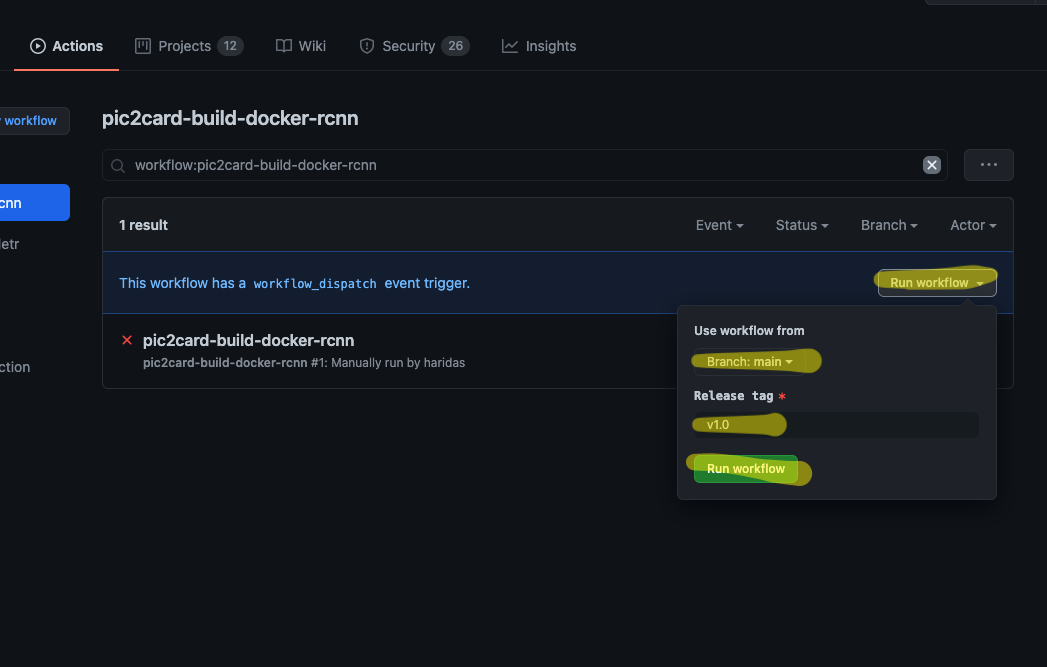Packaging Object Detection Models for Production
Tweetin data-science · Sat 16 January 2021
in data-science · Sat 16 January 2021
Recently I got the chance to be part of an open-source project effort from our company named pic2card. There we are mainly exploiting the object detection models for this problem. Object Detection models have become one of the mainstream in the ML world, a lot of innovative models came into existence in recent years. Currently, most of the models are trying to reduce the latency by keeping the quality of the existing model, so that these can be applied for videos and real-time video streams.
If you consider the different models available for object detection you can see a lot of implementations available for the key architectures in Tensorflow and PyTorch. These object detection models mainly use a benchmark dataset named MS-COCO, similar to the ImageNet dataset for the Image classification competition.
So if you are using an object detection model to solve one of your problems, how you manage the different model options at your hand, end-to-end how you design the pipeline and build and ship your project into production. Here I’m trying to show a quick walkthrough of how we attacked this problem for the pic2card project.
Key things to concentrate on are,
Your project structure and modularisation heavily influenced by the downstream pipeline requirements like the one listed above. Let’s look into each one of them briefly.
requirements.txt filerequirements-tensorflow.txt, or requirements-pytorch.txt# Common dependencies are kept here
$ cat requirements.txt
numpy==1.9.2
flask==1.1.1
...
# Only Tensorflow specific packages
$ cat requirements-tensorflow.txt
tensorflow==1.15.4
# Only Pytorch specific packages.
$ cat requirements-pytorch.txt
torch==1.5.0
torchvision==0.6.0
Keeping separate requirements has to be in sync with how you structure the code so that
the code path that requires PyTorch won't get loaded while using the tensorflow models
for inference. With Python, it's easy due to the dynamic nature of the language, with
static languages it has to be done by a common interface implementation and separate library packaging.
Now let's see how to build the Dockerfile for your ML Service and how we can include the trained model with your ML Service.
Dedicated Dockerfile for each type of pipeline provided they have options to change the pipeline properties at image build time itself. Make use of the Multi-stage dockerfiles, which helps to accommodate different configurations that we need to bake into the docker image build time. eg;
# Global ARGs
ARG TARGET_API=frozen_graph
## Stage 1: TFS base stage
FROM python:3.7.9-slim-buster as tfs
ADD requirements/requirements.txt /app/requirements.txt
## Stage 2: Embedded model with service stage.
FROM python:3.7.9-slim-buster as frozen_graph
# Fill in both, as in this case, we need both dependencies.
ADD requirements/requirements-frozen_graph.txt /app/
ADD requirements/requirements.txt /app/
RUN cat /app/requirements-frozen_graph.txt >> /app/requirements.txt
COPY model/frozen_inference_graph.pb /app/model/
## Stage 3: Temp stage to keep project files
FROM $TARGET_API AS build
COPY app /app/app
COPY mystique /app/mystique
## Stage 4: Main Docker Image
FROM python:3.7.9-slim-buster
# Life-saving option to know which version of code got packaged in this
# docker image!
ARG COMMIT_SHA=
ARG BRANCH_NAME=
# Having separate ARG variable as global one is not accessible
# under one FROM block.
ARG tfs_enable=
# Use this ENV to control the code path in your service.
ENV ENABLE_TF_SERVING=$tfs_enable
### < Dependencies and projects in place, now goes install dependency and other setups. > ###
Here only showing the key parts of this setup. If you want to see how this has been done for the pic2card project please refer here.
For the PyTorch other framework based models you can follow a similar pattern of
build pipeline and accordingly modularise the packages for better management of your
entire pipeline. If you want to see the PyTorch example, please check this repository.
This would be an Icing on the cake feature for you, This helps to avoid all the headache of setting up a CICD pipeline and manage those. So Actions help to make the end-to-end pipeline works well, and error free and it's less stressful for the entire team.
Another cool feature is you can build your project and push the docker image to GitHub provided docker registry itself.
See the pipeline setup that we have done for the pic2card project - https://github.com/microsoft/AdaptiveCards/tree/main/.github/workflows

This is another feature we get for free from GitHub; this avoids the worry of where to keep the docker images and you don't need to manage docker registry servers for yourself. You can build the images using GitHub actions and keep them under the GitHub docker registry. This makes life easier to build and keep the publically available images for anybody to deploy or try out.
Try this out here https://github.com/features/packages
If you are already into AWS or other cloud providers to provision your infrastructure then it’s much easier to deploy your ready to run docker image into serverless options provided by these cloud providers. Eg; Azure Functions or AWS Lambdas, both these providers support serverless option with docker so that you can easily deploy it without having to package it in some other cloud provider specific packaging of your project ( eg; zip or others ).
As mentioned above one thing to be aware of is ensure your image size is not too large, in our case it comes close to 1GB for the ML service image with a model embedded in it.
The key takeaway I can give if you are planning to package your ML based services are,